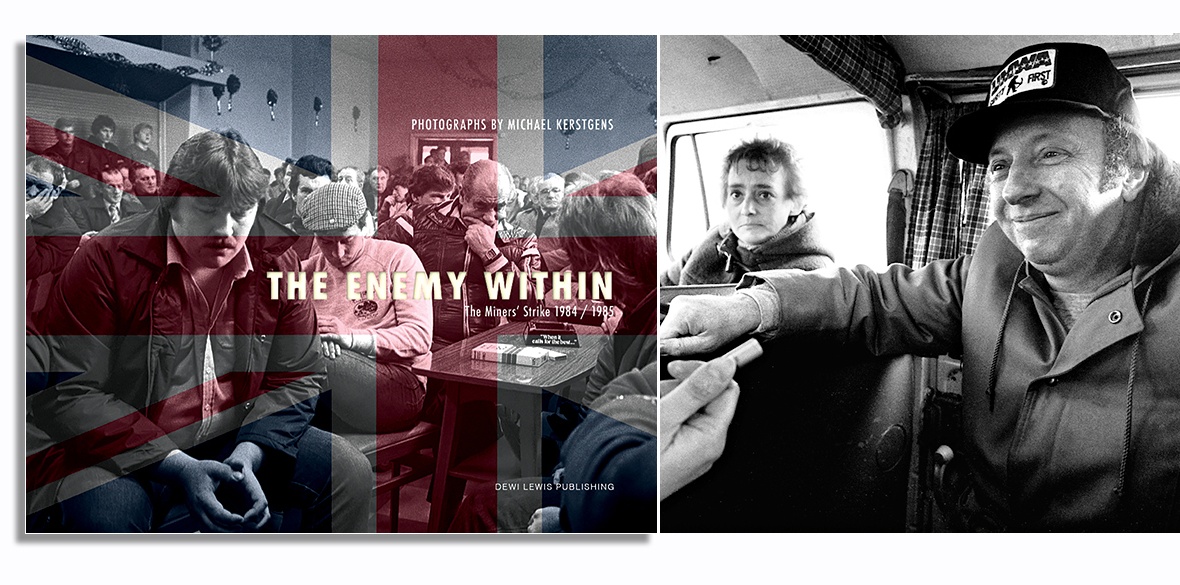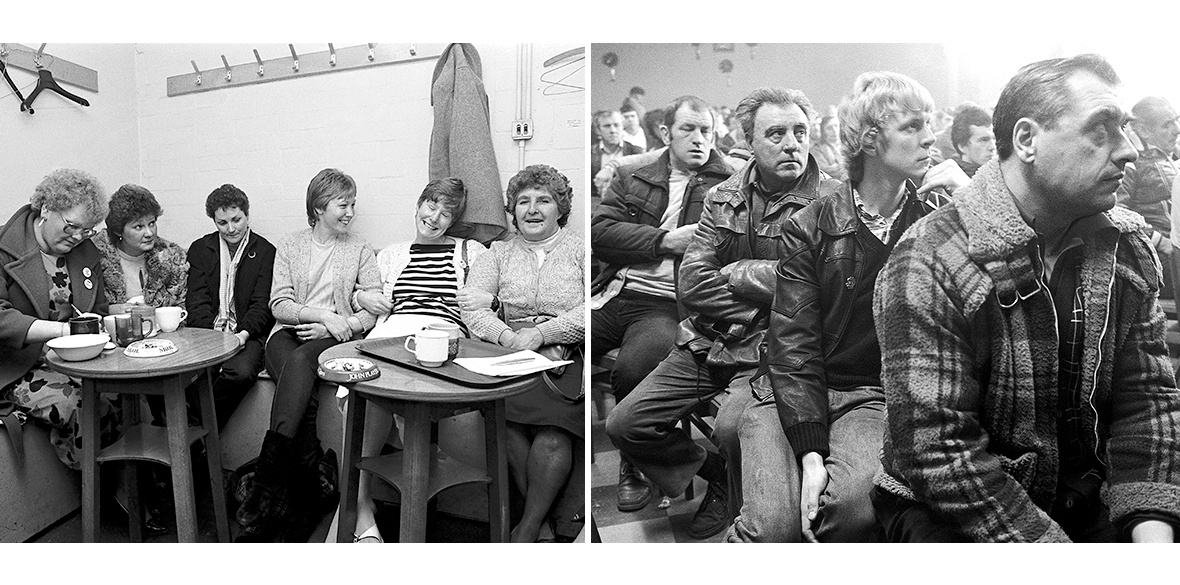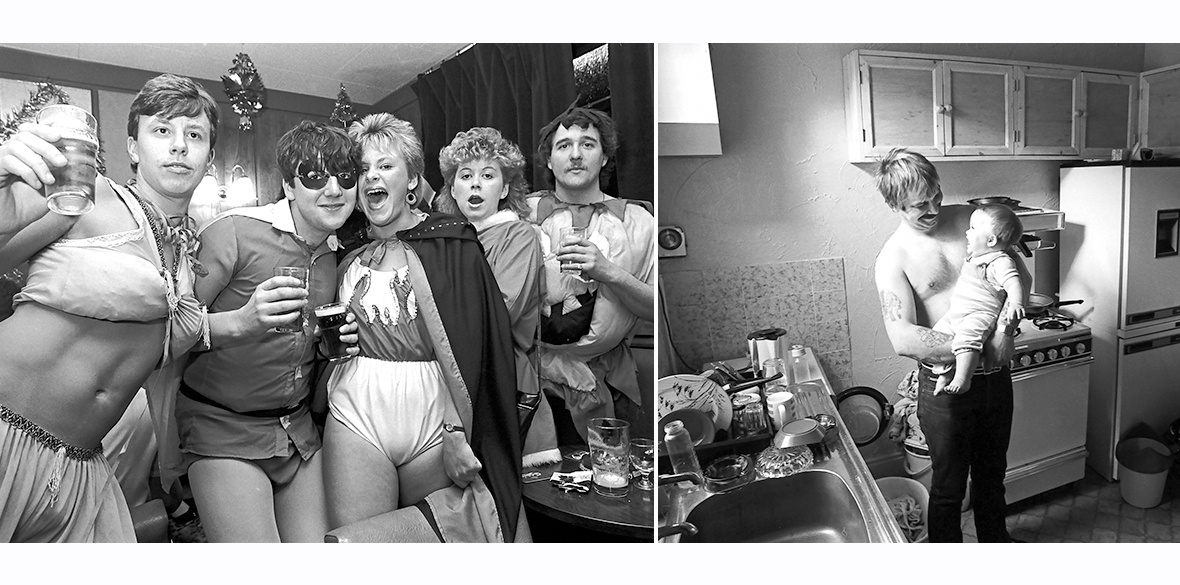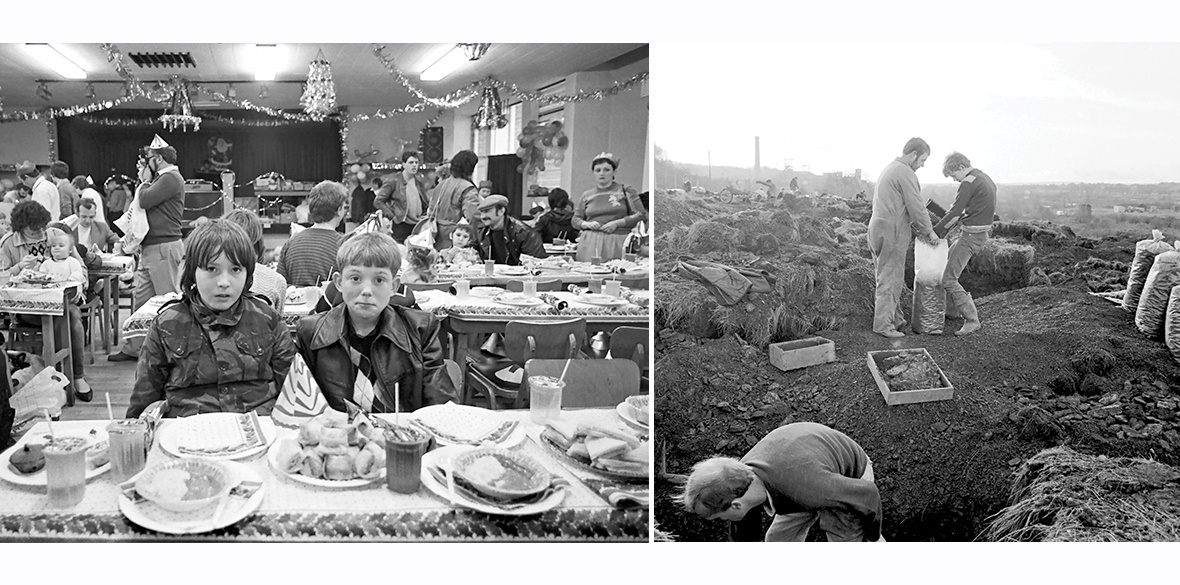This is the last article you can read this month
You can read more article this month
You can read more articles this month
Sorry your limit is up for this month
Reset on:
Please help support the Morning Star by subscribing here
The Enemy Within - The Miners Strike 1984/85
By Michael Kerstgens
Dewi Lewis, £35.00
THIS photo album is an unusual one in showcasing images taken by a young German student who, almost by accident, became intimately involved in the big British miners’ strike of 1984/85.
Michael Kerstgens’s book documents the lives and struggles of the strikers based in the village of Wombwell, near Barnsley in the Yorkshire coalfield. As a hard-up student, he was generously taken in by a local miner, Stuart “Spud” Marshall and his wife, Marsha, who lived in a small, terraced house, along with their son, Mark, daughter, Jill, and Jill’s boyfriend.
He relates: “From the window of his house, you could see the strikebound Darfield Main Colliery. So it was that I landed right in the middle of one of the most bitter industrial conflicts that the UK has ever seen. It was agreed I could stay for as long as I liked, accompany them wherever they went, and, most important of all, take photographs.
“Thanks to Spud and Marsha, I was able to photograph meetings and rallies to which the press would never have been invited. Spud introduced me to the rest of the striking miners with the words: ‘This is Michael. He’s from Germany, and he’s a mate’.”
What that great strike 40 years ago was really about was defending strong and stable working-class communities, a whole culture and way of life. The miners and their families could see very clearly what the mass closures of the pits ordained by the Thatcher government would mean for them and their families. That’s why they fought so determinedly and resiliently.
Kerstgens’s images are all in black and white, which lends them an additional historical patina. While images were taken by many other photographers during the strike, Kerstgens’s have a unique quality of intimacy, and focus almost entirely on one small Yorkshire mining community.
What strikes me about his photos is how much they also reflect the poverty of these communities. Despite the fact that miners were a key section of the country’s working class, providing the coal which was vital at the time to the British economy, doing so by dint of back-breaking work in dirty and unhealthy conditions, over generations, they were poorly remunerated for their sacrifice.
Inside, their homes look more like institutional accommodation: an obligatory faux-leather three-piece suite, taking up much of the small space in the sitting room, in which a primitive gas heater or small coal fire would be the only source of heat, the walls are bare of pictures or decoration.
Even the local pubs and social clubs have a basic, utilitarian stamp, with cheap furniture, small tables littered with ash trays and beer mats. The men sit in front of their beer glasses, staring vacantly into a future without hope.
Outside, the treeless streets are enclosed by the cramped terraced houses in which most of the miners and their families live. However, despite the austere life and hardship, there was a comradeship and tribal-like coherence that they clung to and valued.
This hardship would grow worse as the strike progressed, but the men and their families still found time between picketing to celebrate and party: Kerstgens captures a New Year’s Eve celebration at the miners’ club, children’s parties and laughter in the face of an implacable enemy.
The strike ran for almost a year until March 1985 — a year of bitter conflict between the miners and the Thatcher government and marked the end of the mining era in Britain.
Kerstgens relates that the strike was already eight months old when he spoke with a NUM representative. “When I told him of my plan, he said that if I wanted to photograph the strike I would need to be clear about which side I was on. His words were plain and spoke volumes about the role played by the British media during the 12 months of industrial action.”
All in all, 70,000 miners would lose their jobs. The end of the miners’ strike marked the beginning of an era of neoliberal politics in which many nationalised industries were privatised to maximise profits.
It was the birth of deregulation, the chief tenets of which were laid down in the 1980s by conservatives such as Margaret Thatcher and US president Ronald Reagan, followed by Tony Blair’s New Labour in the 1990s.
As a farewell present, “Spud” presented him with a miner’s lamp and a pint glass upon which he had engraved his name and everyone else’s along with the dedication: “To Michael — Hands across the water, Hands across the sea.”
Kerstgen remained in regular contact with the family. In 2009 Spud’s wife, Marsha, an activist in her own right, died after a serious illness.
“What interested me then,” Kerstgen emphasises, “was not the political significance but rather the social dimension of the strike and the lives of the families involved.”
To convey some sense of the strike and its aftermath, it must be remembered that when industrial action began, there were over 170 working mines in the UK with more than 180,000 employees. Behind these figures lie countless stories of the families and communities involved.
By 2004, there were only 15 pits and fewer than 7,000 people working in the coal industry.
The defeat had a devastating impact on the mining communities. His book is a moving testament and unique commemoration of that momentous struggle and to the men and women who fought literally for their lives.
The Enemy Within — The Miners Strike 1984/85 is published tomorrow.












